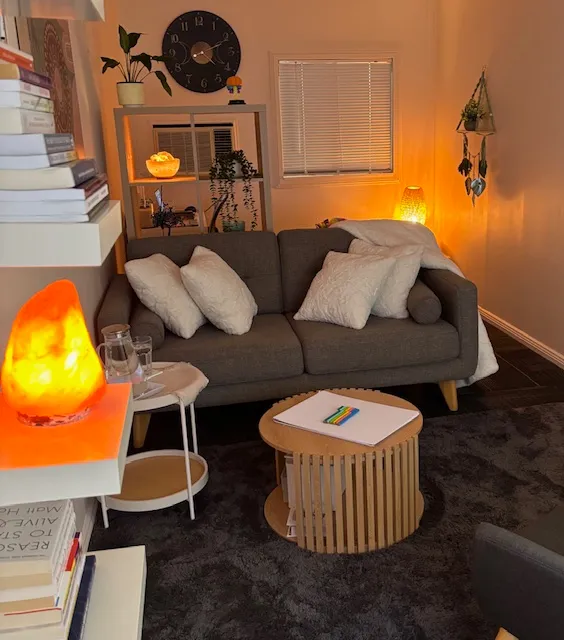Top Down and Bottom Up
When we focus primarily on the thinking mind, through reframing, analysing, diagnosing, or applying intellectual strategies, we engage what is known as a top-down approach. While these methods can offer valuable insights and coping tools, they often operate at the surface level. They may help us understand why we feel the way we do, but on their own, they rarely reach the deeper places where trauma, emotional pain, and stress responses are held.
This is because many of the patterns that shape how we feel, react, and relate to ourselves and others are not purely cognitive, they live in the nervous system, in the body, and in the subcortical parts of the brain that function beneath conscious awareness.
To support real, meaningful transformation, we need to integrate both top-down (mind-based) and bottom-up (body-based) approaches. This allows for a more complete, embodied path to healing, engaging not only the thinking mind but also the deeper layers of the body and nervous system where true healing takes place.
Why Talking Alone Isn’t Always Healing, And Can Sometimes Do Harm
While talking about trauma can feel helpful for some people, revisiting traumatic experiences through storytelling alone, can actually be retraumatising. When we speak about what happened without enough grounding or internal safety, the body and brain may respond as though the traumatic event is happening again, leading to emotional flooding, dissociation, anxiety, or shutdown.
The nervous system doesn't always differentiate between the memory of the event and the present moment. Without adequate resourcing and regulation, retelling the story can reinforce distress rather than resolve it. Simply talking about trauma without engaging the body and nervous system may leave the root of the pain untouched, or worse, reactivate survival responses that were designed to protect you at the time of the original event.
It’s not the memory itself that retraumatises, it’s being in the memory without the safety, support, and capacity to hold it.
Trauma Lives in the Body, Not Just the Mind
Trauma is often stored in the body as sensations, impulses, muscle tension, emotional energy, or fragmented images, not just as words or linear memories. The subcortical areas of the brain, where survival responses are housed, are not easily accessed through logic or language alone.
This is why trauma-informed care involves more than cognitive understanding. It asks us to also listen to the body, to track nervous system responses, to notice the felt sense of safety or activation, and to move gently toward integration without overwhelming the system.
A Safer, More Effective Path: Integration Over Storytelling
In my work, we focus on creating a safe, regulated foundation before ever moving toward trauma material. This includes:
- Building capacity and stability through nervous system regulation
- Slowing down to notice sensations, emotions, and protective strategies
- Using approaches like Embodied Processing, Internal Family Systems (IFS), and Brainspotting to access trauma where it is held, not forcing catharsis through words alone
- Honouring your system’s pacing and readiness, never rushing or pushing into painful territory without proper support
There is no expectation to share your trauma story unless and until it feels right for you. Sometimes the most profound healing happens not by retelling what happened, but by learning how to be with what’s happening inside you now, with curiosity, care, and enough safety to allow something new to emerge.
Pendulation, Titration, and Cohabitation: Why Pacing Matters
Trauma healing is not about diving into the deep end. It’s about building the capacity to stay present with intensity, without becoming overwhelmed. This is where principles like pendulation, titration, and cohabitation come into the process.
Pendulation
Pendulation refers to gently moving between activation and regulation, between distress and safety. Rather than staying in the discomfort or intensity, we move back and forth between what feels difficult and what feels supportive, helping your system learn that it is safe to come back into balance. This builds resilience and flexibility in your nervous system, rather than reinforcing fear or collapse.
Titration
Titration means working with small pieces at a time, just enough for your system to process without becoming flooded. Like adding one drop of dye to water, titration allows us to touch into trauma material gradually, reducing the risk of overwhelm. This slow, intentional pacing respects your body’s wisdom and readiness.
Cohabitation
Cohabitation involves learning how to be with the parts of yourself that hold pain, fear, or shame, without needing to fix, banish, or get rid of them. Instead of pushing these parts away, we build a relationship with them, allowing space for these experiences to exist alongside safety, support, and self-compassion. Through this, we reduce inner conflict and foster integration.
These practices are not just techniques, they are ways of relating to yourself with care, patience, and respect for your system’s natural rhythm.
Healing Happens Through Safety, Not Repetition
Trauma work is not about forcing breakthroughs or reliving the past. It’s about creating the conditions where your body, mind, and nervous system feel safe enough to process what they’ve been holding, at your pace, in your way.
When we combine both top-down and bottom-up approaches thoughtfully and respectfully, we support healing from the inside out, working not only with what you know in your mind, but also with what your body remembers and holds.
This integrated path leads to greater resilience, emotional balance, and well-being that cannot always be reached through talking alone.
Schedule an Appointment
It would be my privilege to walk alongside you on your journey to a more fulfilling life. I offer a free 15-minute phone or video consultation to ensure I am the right fit for your needs.
Book Appointment





